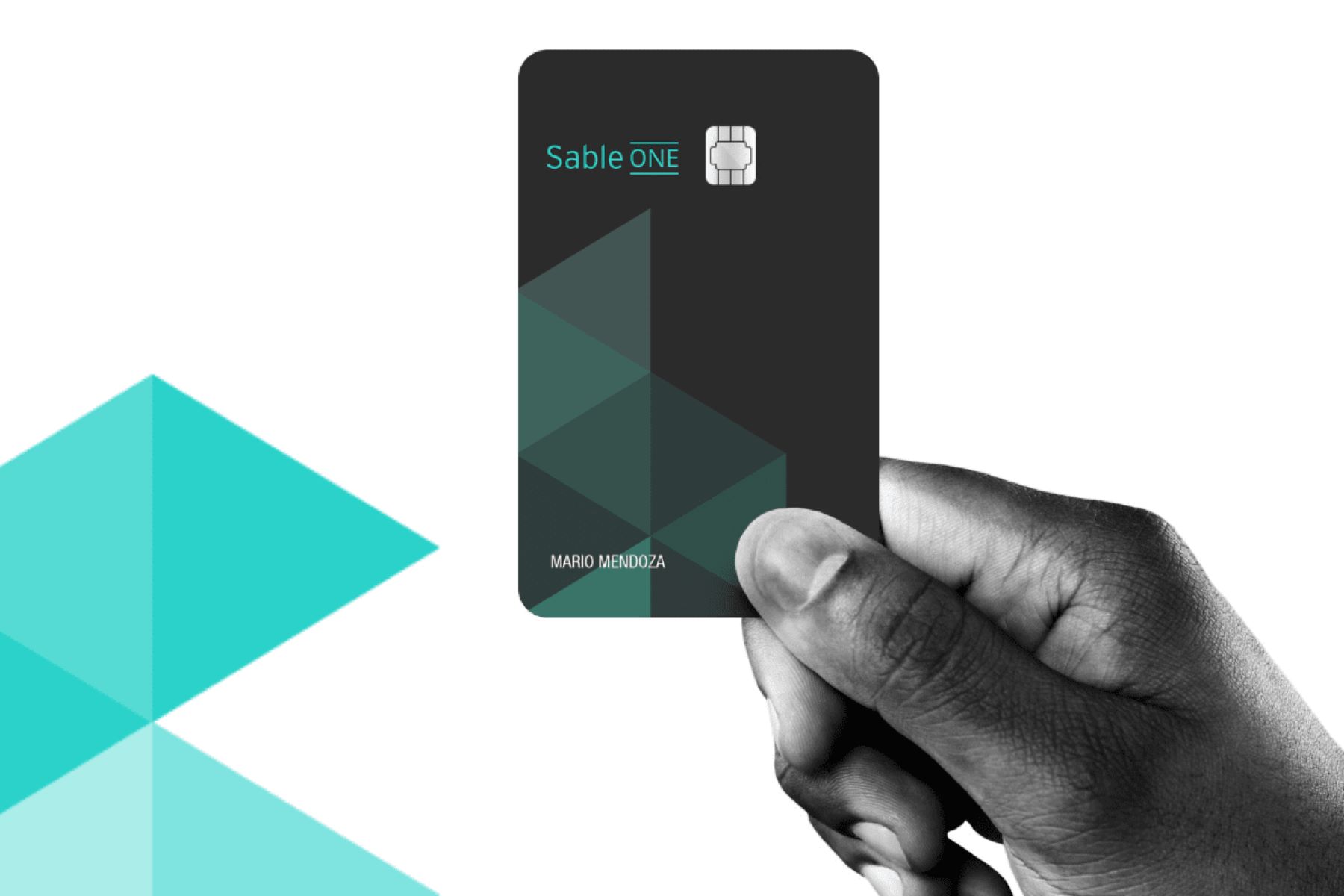

Finance
How Does A Joint Credit Card Work
Modified: March 6, 2024
Learn how a joint credit card works and how it can benefit your finances. Discover the advantages and considerations of sharing a credit card with a partner or family member.
(Many of the links in this article redirect to a specific reviewed product. Your purchase of these products through affiliate links helps to generate commission for LiveWell, at no extra cost. Learn more)
Table of Contents
Introduction
A joint credit card can be a valuable financial tool for couples, family members, or close friends who want to share financial responsibilities. It allows multiple individuals to have access to a single credit card account and share both the benefits and obligations that come with it. Joint credit cards can be an effective way of managing expenses, building credit, and streamlining finances.
With a joint credit card, both cardholders have the ability to make purchases, track expenses, and make payments on the shared account. This can be particularly beneficial for couples who want to consolidate their finances or parents who want to teach their children about responsible credit card usage. It can also help in situations where one individual has a higher credit score, as the joint card can provide the other person with the opportunity to build or improve their credit.
However, it’s important to understand the mechanics, benefits, responsibilities, and potential risks associated with joint credit cards before signing up for one. This article will provide a comprehensive overview of how joint credit cards work, including the application process, benefits, responsibilities, and tips for effectively managing these shared accounts. Whether you are considering applying for a joint credit card or simply want to learn more about this financial tool, this article will provide you with the necessary information to make informed decisions.
Definition of Joint Credit Card
A joint credit card is a credit card that allows two or more individuals to share a single credit card account. Unlike an authorized user, who has access to someone else’s credit card but is not responsible for the debt, joint credit cardholders are equally responsible for all transactions and debts incurred on the account. This means that both cardholders are liable for making payments and maintaining the account’s financial obligations.
When applying for a joint credit card, all cardholders will typically have their names appear on the card, have access to the account’s credit limit, and receive statements and notifications about the account’s activity. Joint credit cardholders have the same privileges and responsibilities as the primary account holder, including making purchases, redeeming rewards, and managing payments. However, it is important to note that even though both individuals share the responsibility for the card, they may have different spending limits or credit scores.
Joint credit cards are commonly used by couples or family members who want to combine their finances or establish credit together. By sharing a credit card, they can track expenses, build credit history, and streamline their financial management. It can also be helpful for situations where one individual has limited or no credit history, as they can piggyback off the other person’s creditworthiness to improve their own credit score.
It’s important to recognize that joint credit cards are not limited to romantic partners or family members. Close friends or business partners may also choose to share a credit card account to facilitate their joint financial activities. Whatever the relationship may be, it is crucial for all cardholders to have open communication and trust when using a joint credit card.
How to Apply for a Joint Credit Card
Applying for a joint credit card is similar to applying for an individual credit card, with a few additional steps to add the joint cardholder. Here is a step-by-step guide on how to apply for a joint credit card:
- Research and Compare: Begin by researching different credit card options available in the market. Look for credit cards that offer joint account capabilities and compare their features, benefits, interest rates, and fees. Consider factors such as rewards programs, introductory offers, and customer service.
- Gather Required Information: Collect all the necessary information and documentation for the application. This typically includes personal identification documents, such as social security numbers, proof of address, and employment information for both applicants.
- Choose a Primary Cardholder: Decide who will be the primary cardholder. This person will be primarily responsible for managing the account, receiving statements, and making payments. The primary cardholder will also have the authority to add or remove joint cardholders.
- Apply Online or In-person: Visit the credit card issuer’s website or a local branch to begin the application process. Fill out the application form, providing accurate information for both applicants. If applying online, ensure that the website is secure and encrypted to safeguard your personal and financial information.
- Provide Joint Cardholder Information: When prompted, provide the necessary details of the joint cardholder, such as their full name, social security number, date of birth, and contact information. This information is crucial to link the joint cardholder to the primary cardholder’s account.
- Submit the Application: Review the application for accuracy and completeness before submitting it. Double-check that all the information provided is correct, as any errors could result in delays or rejection.
- Wait for Approval: After submitting the application, wait for the credit card issuer to review and process it. If approved, both the primary cardholder and joint cardholder will receive a credit card in their names within a few weeks.
- Activate and Set Limits: Once the credit card arrives, activate the card as instructed by the credit card issuer. It is important for the primary cardholder to communicate with the joint cardholder about the credit limit, usage expectations, and any spending restrictions that may be agreed upon.
Remember, transparency and open communication between all parties involved is crucial when applying for and using a joint credit card. It’s vital to discuss financial goals, spending habits, and responsibilities to ensure that both cardholders are on the same page and can manage the joint credit card account effectively.
Benefits of a Joint Credit Card
Joint credit cards offer several advantages for individuals who choose to share a single credit card account. Here are some of the key benefits:
- Shared Expenses: One of the primary benefits of a joint credit card is the ability to share expenses. Whether it’s for household bills, groceries, or other shared expenses, having a joint credit card can simplify financial management and make it easier to track and split costs.
- Building Credit: For individuals with limited or no credit history, a joint credit card can be an effective way to establish and build credit. By sharing a credit card account with someone who has a strong credit history, the joint cardholder can benefit from the positive credit activity and improve their own creditworthiness over time.
- Consolidated Rewards: Many credit cards offer attractive rewards programs, such as cashback, travel miles, or points. With a joint credit card, all the rewards earned from purchases made by both cardholders are pooled together, allowing for the accumulation of rewards at a faster rate.
- Streamlined Finances: Managing multiple credit card accounts can be burdensome and time-consuming. By using a joint credit card, individuals can streamline their finances and consolidate their credit card activities into a single account, making it easier to track expenses and make payments.
- Shared Liability: Joint credit cardholders have shared liability for the account. This means that both individuals are equally responsible for making payments on time and managing the credit card debt. Sharing the responsibility can foster trust and financial accountability between the cardholders.
- Higher Credit Limit: As joint credit cardholders, the credit limit available for the account is typically higher compared to having separate individual credit cards. This increased credit limit can be advantageous for managing larger expenses or emergencies.
- Financial Education: Joint credit cards can be a valuable tool for teaching financial responsibility and money management to young adults or those with limited experience. It allows them to learn about budgeting, tracking expenses, and responsible credit card usage under the guidance and supervision of a more experienced cardholder.
While joint credit cards offer numerous benefits, it is important for both cardholders to have open and honest communication about financial goals, spending habits, and repayment plans. It’s crucial to establish clear guidelines and expectations to ensure that the joint credit card is used responsibly and in a way that benefits both parties involved.
Responsibilities and Liabilities of Joint Cardholders
With the benefits of a joint credit card come certain responsibilities and liabilities that both cardholders must be aware of. Here are the key responsibilities and liabilities of joint cardholders:
- Shared Financial Responsibility: Both joint cardholders are equally responsible for the credit card debt and financial obligations of the account. This means that all charges, fees, and interest incurred on the card are the shared responsibility of both individuals.
- Repayment Obligations: Joint cardholders must ensure that the credit card payments are made on time and in full. Late or missed payments can negatively impact both cardholders’ credit scores and result in penalties, fees, and increased interest rates.
- Mutual Agreement: It is important for joint cardholders to establish clear guidelines and agreements regarding credit card usage. This includes setting spending limits, discussing major purchases, and outlining a repayment plan. Both individuals must be on the same page to avoid any financial misunderstandings or disputes.
- Monitoring Account Activities: Both joint cardholders have the right and responsibility to monitor the account activities regularly. This includes reviewing monthly statements, tracking expenses, and keeping an eye out for any unauthorized charges or errors.
- Communication and Consent: Open communication between joint cardholders is essential. Any changes to the account, such as adding or removing joint cardholders, should be discussed and agreed upon by all parties involved. Consent and consensus are vital to maintaining trust and harmony within the joint credit card arrangement.
- Credit Score Implications: The usage and repayment behavior of the joint credit card can impact the credit scores of both cardholders. Any negative activity, such as late payments or high credit card utilization, can harm both individuals’ creditworthiness. Conversely, responsible credit card usage can help improve both credit scores.
- Cardholder Relationship: It’s important to recognize that joint credit cards are not limited to romantic partners or family members. However, it is crucial for all joint cardholders to have a strong relationship based on trust and mutual understanding. It is advisable to have a plan in place for handling disagreements or potential disputes that may arise concerning the credit card account.
Understanding and accepting these responsibilities and liabilities is key to successfully managing a joint credit card. By establishing clear guidelines, maintaining open communication, and fulfilling mutual obligations, joint cardholders can reap the benefits of a shared credit card account while minimizing any potential risks or conflicts.
Tips for Managing a Joint Credit Card
Managing a joint credit card requires effective communication, responsible financial habits, and a shared commitment to financial well-being. Here are some helpful tips for successfully managing a joint credit card:
- Set Clear Spending Limits: Establish spending limits for the joint credit card to ensure that both cardholders are aware of how much they can spend. This helps prevent overspending and surprises when the bill arrives.
- Create a Budget: Develop a budget together to track expenses and ensure that the joint credit card aligns with your overall financial goals. This will help maintain financial discipline and avoid unnecessary debt.
- Regularly Review Statements: Both joint cardholders should review credit card statements regularly. This allows for early detection of any unauthorized charges or errors that may need to be addressed with the credit card issuer.
- Communicate about Large Purchases: Before making significant purchases on the joint credit card, it’s essential to discuss them with the other cardholder. Obtaining mutual consent and agreement helps maintain transparency and avoids any surprises.
- Make Timely Payments: Consistently make payments on time to avoid late fees and protect both cardholders’ credit scores. Consider setting up automatic payments or reminders to ensure payments are not missed.
- Monitor Credit Card Utilization: Keep an eye on the credit card utilization rate, which is the ratio of the credit card balance to the credit limit. Aim to keep this rate below 30% to avoid negatively impacting credit scores. Ideally, strive for a utilization rate of 10% or lower.
- Communicate Financial Changes: Inform the other joint cardholder about any significant changes in income, financial obligations, or unexpected expenses. This helps in planning and managing the joint credit card account effectively.
- Regularly Check Credit Reports: Each cardholder should regularly review their credit reports to ensure accuracy and prompt resolution of any discrepancies. Monitoring credit reports helps maintain credit health and prevents identity theft.
- Keep Communication Open: Regularly communicate and have open discussions about the joint credit card account. This includes discussing any concerns, changes in financial circumstances, or potential adjustments to the spending limits or budget.
- Manage Disputes Peacefully: In the event of disputes or disagreements, approach them calmly and seek a peaceful resolution. It is important to prioritize the financial well-being of both joint cardholders and maintain a harmonious relationship.
By implementing these tips, joint credit cardholders can effectively manage their shared credit card account, maintain good credit, and build a solid foundation for their financial success.
Potential Risks and Considerations
While joint credit cards offer several benefits, it’s important to be aware of the potential risks and considerations involved. Here are some factors to consider before applying for a joint credit card:
- Shared Financial Liability: Joint cardholders are equally liable for the debts incurred on the credit card. This means that if one cardholder defaults on payments or overspends, it can negatively impact both cardholders’ credit scores and financial well-being.
- Lack of Control: With a joint credit card, both cardholders have equal control over the account. This can lead to conflicts if one cardholder abuses their spending privileges or does not adhere to the agreed-upon spending limits.
- Difficulty in Separating Finances: If the joint cardholders decide to separate or end their financial arrangement, it can be challenging to divide the credit card debt and disentangle shared finances. This can lead to complications, especially if there is a disagreement about the responsibility for the remaining debt.
- Credit Card Misuse: There is a risk that one joint cardholder may misuse the credit card or make unauthorized purchases, leading to financial strain and potential legal issues. It is crucial to establish a high level of trust and open communication to mitigate this risk.
- Damage to Relationships: Financial matters can sometimes strain relationships. Disagreements regarding spending habits, repayment responsibilities, or misuse of the credit card can lead to tension and conflicts between joint cardholders. It is important to have open and honest conversations to maintain a healthy financial and personal relationship.
- Impact on Personal Credit: Any late payments, high credit utilization, or defaults on the joint credit card can impact both cardholders’ credit scores. It’s essential to keep communication and financial responsibility in check to protect individual creditworthiness.
- Unequal Credit History: If one joint cardholder has a stronger credit history than the other, it can impact the joint credit card’s overall creditworthiness. It may result in a higher interest rate, lower credit limits, or limited access to certain credit card rewards or benefits.
- Additional Financial Vulnerability: Joint credit cardholders may become financially vulnerable if one cardholder faces unforeseen circumstances such as job loss, illness, or other financial hardships. It is important to have contingency plans and open communication to address such situations and protect both parties’ financial well-being.
Considering these potential risks and challenges can help joint cardholders make informed decisions and take necessary precautions. It is crucial to establish trust, maintain open communication, and regularly review the joint credit card’s activity and financial responsibilities to avoid potential pitfalls.
Conclusion
A joint credit card can be a valuable tool for couples, family members, or close friends who want to combine their finances, share expenses, or build credit together. It offers the convenience of a shared credit card account, the ability to track expenses easily, and the opportunity to accumulate rewards collectively.
However, managing a joint credit card requires open communication, trust, and a shared commitment to financial responsibility. Both cardholders must understand their responsibilities and liabilities, establish spending limits, and regularly review account activity to ensure a successful partnership.
Potential risks, including shared financial liability and the potential strain on relationships, must also be considered. It’s important to approach the joint credit card arrangement with careful consideration, clear agreements, and a mutual understanding of the potential challenges that may arise.
By following the tips for managing a joint credit card, including setting clear spending limits, communicating openly, and making timely payments, joint cardholders can effectively navigate their shared financial journey and make the most of the benefits offered by a joint credit card.
It’s essential for joint credit cardholders to approach this financial arrangement with transparency, trust, and a commitment to shared financial goals. With the right mindset and responsible financial habits, a joint credit card can be a powerful tool for achieving financial success together.














